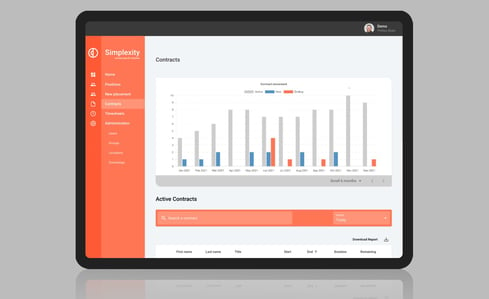The Australian Tax Office (ATO) is actively pursuing over $34 billion in debts owed by small businesses and self-employed individuals, debts that were deferred during the COVID-19 pandemic. This relentless pursuit, experts warn, is pushing businesses to the brink of collapse.
Experts anticipate that insolvency rates could reach levels not seen since the aftermath of the global financial crisis. Many of the struggling companies belong to sectors already grappling with a sluggish economy, including construction, hospitality, and retail.
Despite owing money to multiple creditors, aggressive debt collection actions from the ATO are exacerbating the situation for these businesses. While the ATO may not always be the primary creditor in court winding-up applications, experts note a significant increase in its debt recovery efforts, particularly against businesses still struggling to recover amid a deepening economic downturn.
These actions include reporting tens of thousands of small businesses with debts to credit agencies, issuing garnishee notices that allow direct withdrawal from business owner's bank accounts, and initiating winding-up applications.
Tony Greco, the general manager of technical policy at the Institute of Public Accountants, expresses concern that many small businesses remain financially vulnerable and heightened ATO action could push more of them into insolvency.
"For many sectors, the post-COVID period has been challenging," Greco observes. "If the ATO were to aggressively pursue this debt, we could see numerous small businesses shutting down and declaring bankruptcy."
‘Paying tax in Australia is not optional’
The total amount of debt owed to the ATO surged to $52.4 billion by December 31, 2023, marking a substantial increase from the $26.4 billion recorded at the end of 2019.
Of this total, small businesses account for $34.1 billion, representing 65 per cent of the collectable debt.
Simultaneously, the ATO has intensified its efforts to recover debts from small businesses while also revisiting old tax debts, placing a financial strain on many individuals and even putting some at risk of losing their homes.
According to an ATO spokeswoman, there has been a notable rise in businesses failing to meet tax deadlines compared to pre-pandemic levels. She underscores the mandatory nature of taxation in Australia and affirms the ATO's commitment to pursuing small businesses with outstanding debts.
"The ATO employs a range of targeted strategies to address the escalating issue of overdue debts. This includes a renewed focus on formal recovery measures, such as disclosing debts to credit agencies or pursuing court-ordered liquidation for unresolved debts," she explains.
"It is unacceptable for businesses to divert funds designated for employee entitlements to meet their day-to-day financial obligations."
What actions are the ATO taking for debt recovery
Jarvis Archer, Head of Business Restructuring at Revive Financial, remarks that the ATO has entered 2024 with a notably aggressive stance.
"They've unmistakably shifted gears in dealing with taxpayers who have outstanding debts. The choices are now stark: either pay up, close down or restructure your debt," he states.
Archer attributes the surge in company insolvencies over the past financial year, 36 per cent higher than the previous year and now 25 per cent higher than pre-COVID levels to the ATO's heightened debt recovery efforts and the sluggish economy amidst rising interest rates. In the last four months alone, insolvencies have surged by 49 per cent compared to the previous year.
Drawing parallels to 2012, four years after the global financial crisis when company insolvencies peaked at 10,757, Archer anticipates that this financial year's figures may surpass that record.
"If the long-anticipated wave of insolvencies is indeed imminent, then it appears that time is upon us," Archer remarks.
He observes that the ATO's debt recovery activities have intensified significantly since March 2022, with tighter payment deadlines and immediate issuance of winding-up notices once deadlines elapse.
"The ATO has aggressively pursued debt collection this year," he comments. "They're employing all available tools, including director penalty notices, which give company directors 21 days to initiate insolvency proceedings voluntarily, failing which they become personally liable for their company's debts."
Independent MP Andrew Wilkie also expresses concern that the ATO's current debt recovery approach could drive more small businesses into insolvency.
"At present, I don't believe the ATO is exercising prudence," Wilkie argues.
The personal toll on company directors
According to Mr. Archer, post-COVID, "everything is back on the table," and it's having a detrimental personal impact.
"Some businesses may suffer unfair or disproportionate consequences," he contends.
While acknowledging the necessity of addressing "zombie companies," Mr Archer has witnessed instances where small businesses, such as one affected by the Brisbane floods, were unfairly targeted while trying to recover.
Kate Conneely, insolvency and restructuring adviser at Cor Cordis, echoes Mr Archer's observations, noting the ATO's intensified debt recovery measures, including director penalty notices, bank account garnishments, and court-initiated winding-up applications.
Ms. Conneely underscores the personal toll such actions can take, particularly for small business directors who often put their assets at risk.
She highlights that businesses facing insolvency are typically those struggling in sectors like construction, hospitality, and retail due to economic slowdown.
Contrary to widespread predictions of an impending insolvency wave, Ms Conneely suggests a return to pre-COVID levels, with insolvency rates remaining relatively subdued.
"While some anticipated a surge, the reality is that insolvency levels have remained relatively stable in recent years," Ms. Conneely concludes.












_11zon%20(1).jpg?width=302&height=124&name=linkedin-sales-solutions-vqWWOnA6--M-unsplash%20(2)_11zon%20(1).jpg)






.png?width=300&name=Enterprise%20(12).png)